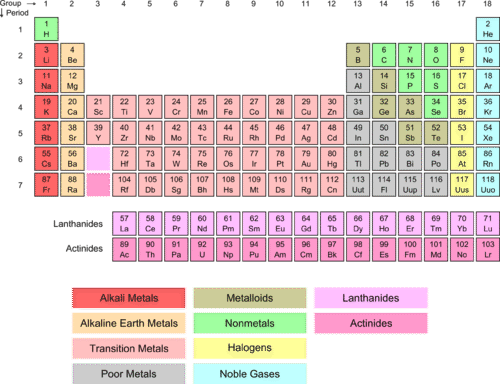8.5 过渡金属成形
章节大纲
-
How do transition metals form ions?
::金属如何转化成离子?The are an interesting and challenging group of . They have perplexing patterns of distribution that don’t always follow the electron filling rules. Predicting how they will form is also not always obvious.
::电子填充规则并不总是遵循电子填充规则。 预测它们将如何形成也并非总是显而易见的。Transition Metal Ions
::过渡金属离子Transition metals belong to the d block, meaning that the d sublevel of electrons is in the process of being filled with up to ten electrons. Many transition metals cannot lose enough electrons to attain a noble- electron configuration . In addition, the majority of transition metals are capable of adopting ions with different charges. Iron, which forms either the Fe 2+ or Fe 3+ ions, loses electrons as shown below.
::过渡性金属属于d区块,这意味着电子的分级水平正在被填充多达10个电子,许多过渡性金属不能损失足够的电子以达到高贵电子配置,此外,大多数过渡性金属能够以不同电荷吸收离子。铁构成的Fe2+或Fe3+离子会失去电子,如下文所示。
::FeFe2++2e-[[阿 3d64s2 [阿 3d6Fe3+3e-[阿 3d64s2 [阿 3d5According to the Aufbau principle , the electrons fill the 4 s sublevel before beginning to fill the 3 d sublevel. However, the outermost s electrons are always the first to be removed in the process of forming transition metal . Because most transition metals have two , the charge of 2+ is a very common one for their ions. This is the case for iron above. A half-filled d sublevel ( d 5 ) is particularly stable, which is the result of an iron losing a third electron.
::根据Aufbau原则,在开始填满3D子级之前,电子填满了4个子级。然而,最外层电子在形成过渡金属的过程中总是第一个被移除。由于大多数过渡金属有2个,2+的电荷对其离子非常常见。以上铁的情况就是如此。半填d子级(d5)特别稳定,这是铁失去第3个电子的结果。A. Rust is a complex combination of oxides of iron(III), among them iron(III) oxide, Fe 2 O 3 . B. Iron(II) sulfate, FeSO 4 , has been known since ancient times as green vitriol and was used for centuries in the manufacture of inks.
::A Rust是氧化铁(III)的复杂组合,其中包括氧化铁(III),Fe2O3.B.硫酸铁(II)硫酸盐,FeSO4,自古以来就被称为绿色三丁醇,几个世纪以来被用于制造墨水。Some transition metals that have relatively few d electrons may attain a noble-gas electron configuration. Scandium is an example.
::某些具有相对较少 d 电子的过渡性金属可能达到高温气体电子配置。 就是一个例子。
::ScSc3++3e - [[Ar]3d14s2 [Ar]Others may attain configurations with a full d sublevel, such as zinc and copper.
::另一些国家则可能达到完全的D分级配置,如锌和铜。
::Znn2++2e-[[Ar]3d104s2[Ar]3d10CuCu++e-[Ar]3d104s1[Ar]3d10The resulting configuration above, with 18 electrons in the outermost principal energy level, is referred to as a pseudo noble-gas electron configuration . It gives particular stability to the Zn 2+ and Cu + ions.
::由此形成的上述配置,在最外层主要能源水平上有18个电子,被称为假的惰性气体电子配置,使Zn2+和Cu+离子特别稳定。Summary
::摘要-
Transition metal ion formation is more complex than simple cation formation.
::过渡性金属离子形成比简单的凝固形成更为复杂。 -
Transition metal ions often involve rearrangements of both
d
and
s
electrons.
::过渡性金属离子往往涉及对 d 和 e 电子的重新排列。
Review
::回顾-
What block do the transition metals fall in?
::过渡金属会掉进什么块? -
When writing the electron configuration for a transition metal, which sublevel
(s,p,d,f)
is filled first?
::当为过渡金属写入电子配置时, 哪个子级别( s, p, d, f) 先填充 ? -
When forming transition metal ions, which sublevel (s,p,d,f) loses electrons first?
What is the pseudo noble-gas electron configuration?
::当形成过渡性金属离子时,哪个子级(s,p,d,f)先失去电子? 假的惰性气体电子配置是什么?
-
Transition metal ion formation is more complex than simple cation formation.

